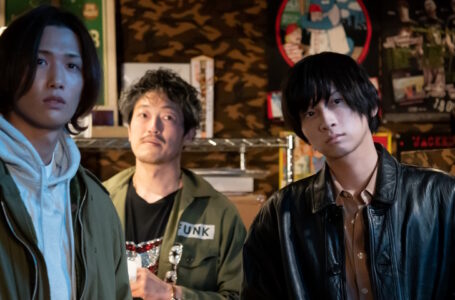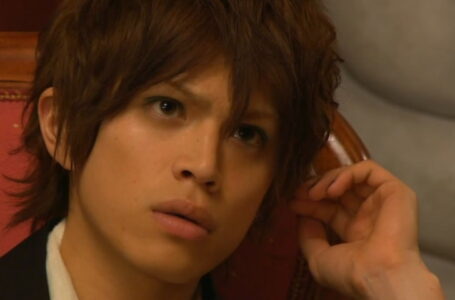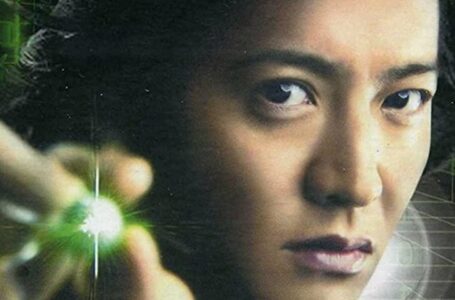J-drama Nostalgia with Hana Yori Dango
I’m back at it again! It’s time, once again, to re-explore my romantic roots with the always questionable but still highly entertaining classic J-dramas. Today, we’re discussing the adaptation of Hana Yori Dango (also known as Boys Over Flowers) — yet another J-drama adapted from a shoujo manga. I always used to confuse this with Atashinchi no Danshi purely on a superficial level, but having watched them both I can now differentiate them.
But that’s a story for another day. (You win this week’s award for “earliest digression in an article” – Ed.) So let’s re-live some of the better days with Japan’s 2005 adaptation of Hana Yori Dango, the best of the best.
A basic break-down of Hana Yori Dango
Hana Yori Dango, like Hanazakari no Kimitachi e, has seen multiple adaptations from its original material. The one we are talking about today was neither the first nor the last adaptation of the manga, with the Taiwanese “Meteor Garden” version that released in 2001 having come out before the manga wrapped up. In fact, another Thai adaptation released in 2021, titled F4 Thailand: Boys Over Flowers. All this should give you an idea of how Hana Yori Dango is not just a classic, but a truly timeless J-drama.
As yet another good old-fashioned reverse harem released in the early ’90s, the story follows the romantic development between two people with vastly contrasting backgrounds and opposing upbringings. Their differences in social status and income provides the main conflict in the series, with other characters attempting to separate the two and prevent their budding romance from blossoming.
Meanwhile, plenty of other issues take root and start to build up within the overall teen drama setting. Not only do we have love triangles, we also have the troublesome trope of changing the bad boy “for the better”. On that note, the level of toxicity here is astounding. Are you sitting comfortably?
Main character Tsukushi Makino is the only student of Eitoku Academy who hails from the working class. She spends over a year managing to avoid drawing any attention to her poor background by staying low — that is, until she stands up for her one and only friend against the Flower 4, more commonly known as the F4.
These four highly influential students are the bullies of the school; they come from the highest earning families who have contributed financially to the school, and this allows them pretty much free rein over it. And standing up against them typically means making a target of yourself; those who have done so in the past have often ended up ostracised and even run out of the school for good.
In the first episode, Tsukushi challenges Tsukasa, the biggest bully of them all, giving him a vocal declaration of war as she lands a punch to his face. As soon as the hit makes contact, the F4 take an immediate liking to her, and this kickstarts the main love triangle. Tsukasa tries to win over her affections after such an impressive and unexpected initial interaction — but Tsukushi only has eyes for the second leading boy of the show and fellow F4 member, Rui.
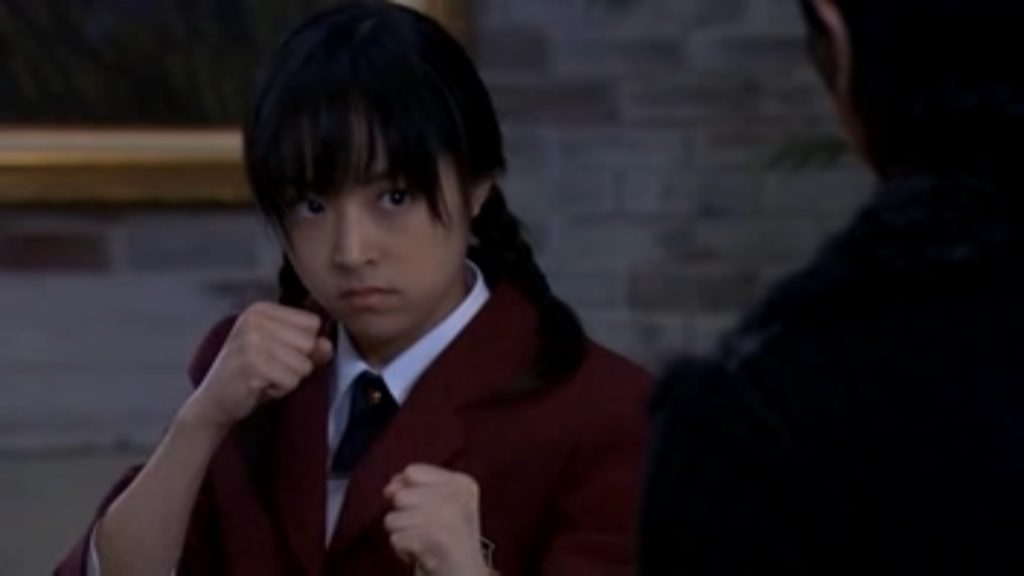
Those heart-throbbing casting decisions
This particular adaptation is almost unanimously considered to be the fan favourite of all the live-action versions of Hana Yori Dango, and a prime reason for this is its cast. The show gave us the first starring roles of a number of big names in the business — most notably its central three characters.
Leading lady Tsukushi is played by Mao Inoue, who you may recognise for her parts in both Kids War: Zaken na yo, and Hana Moyu. There’s no higher compliment I can pay her than to simply say she is Tsukushi. She outclasses every single other performance of the leading lady in every other version of the show; her mannerisms and dialogue hit every humorous and heartfelt note as she balances the rapidly changing emotions of her character in every scene. Indeed, if you were to tell me that she behaved like this in her regular life, I would be entirely convinced.
Then we have the all-important F4, so let’s go through them from least significant to most significant. Each guy in the group represents a completely different attitude to form the ensemble, making them an interesting set of characters as a whole.
Tsuyoshi Abe plays Akira Mimasaka. Sadly, Hana Yori Dango is probably the highlight of his career to date, and it’s a bit of a shame, as I feel like he’s the weakest of the bunch; he simply doesn’t completely sell me on his character. His casting feels a bit off, despite only being one year older than his oldest fellow co-star, Oguri. He looks considerably older compared to every other person on the screen, all of whom are supposedly fellow students. Then again, that fact in itself does well to reinforce his main trait of being the mature and responsible one.
Mimasaka is almost always seen with the next F4 member, Sojiro Nishikado, portrayed by Shota Matsuda and presented as something of a playboy. He’s seen just as sporadically as Mimasaka in this adaptation, but his casting feels much more convincing. But the real highlight of the F4 is, of course, the main pair of most significant boys.
Casting Shun Oguri as the introverted Rui Hanazawa was a flawless decision, as Oguri is one of the classic J-drama heartthrobs. And as the character who stole the hearts of those who read the original manga, it makes sense to have an actor as popular as Oguri play this part. His acting is charming, projecting just enough charisma to make his character captivating despite his role at times feeling like it’s somewhat in the “back line”.
Finally, we have the best of the best, with Jun Matsumoto as Tsukasa Domyouji. J-drama viewers of my generation will likely agree that Matsumoto perfectly embodies the show’s main lead. His bad-boy attitude along with his delivery and characterisation is sublime; he balances troublesome behaviour (that may or may not hide deeper psychological issues) with a sense of emotional baggage and innocence, and we get a real sense of him being someone who was deprived of the familial love he needed.
He makes the character of Tsukasa go from an all-out villain and overall trash fire to an endearing and sympathetic male lead who ends up deserving the heroine in the end — truly commendable, for sure. In fact, Matsumoto proved to be so good in the role, he won GQ Japan’s Man of the Year Award under the singer/actor category for his performance, and it was well deserved.
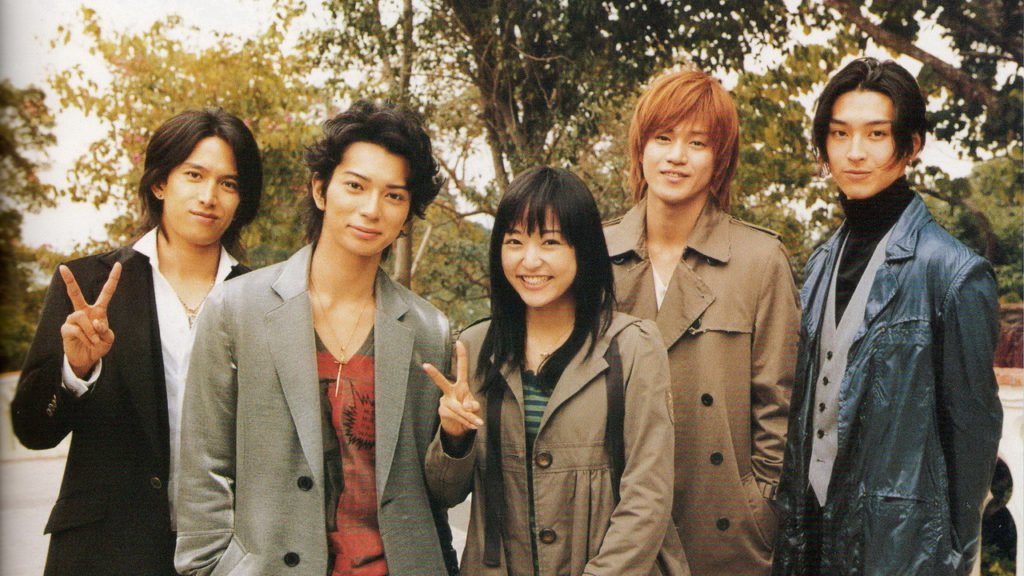
Before we finish this section, it’s worth mentioning how the show’s multiple writers went about condensing the plot of a 37-volume manga into a 9-episode TV show.
The writers went for a more sympathetic approach to Tsukasa by emphasising the bonds he has with his family; this helps to showcase the trauma he feels and explains his outlandish and cruel tormenting of others as the only way he knows to vent his frustrations. The focus on this approach made the believability of the eventual pairing all the more understandable, and if anything, made many J-drama only watchers seek out the original manga to see the other characters explored in greater depth.
On a final note, its cast have a splendid amount of on-screen chemistry with one another that helps to make this adaptation truly timeless. I think for an entire generation of J-drama enjoyers, the ship of Inoue and Matsumoto was the real deal in our eyes.
A believably restrained and well-directed J-drama
Now it’s 2021, and elements of Hana Yori Dango have, as you might expect, not aged brilliantly. In its opening episode alone, there’s plenty of poor green-screen work as Tsukushi delivers a series of knockouts, and your first look at the show’s opening may well be a little offputting.
But the majority of the show is grounded enough in normality that despite certain bonkers elements, it feels like a realistic teen romcom — and this side of things holds up very well indeed, particularly with the heartfelt script and nuanced performances.
So while its camera work and editing may seem quite dated now over a decade and a half later, it still deserves to be recognised for all the effort that was put into it. For example, it is quite noticeable how impressive the location shots are across the series; they capture the various real-life locations well and provide a good visual depiction of the characters’ contrasting levels of wealth.
The directing is a particular highlight, since the actors aren’t anywhere near as robotic or stiff here unlike in many other J-dramas out there — and it once again elevates Hana Yori Dango to being one of the most famous J-dramas out there with very good reason.
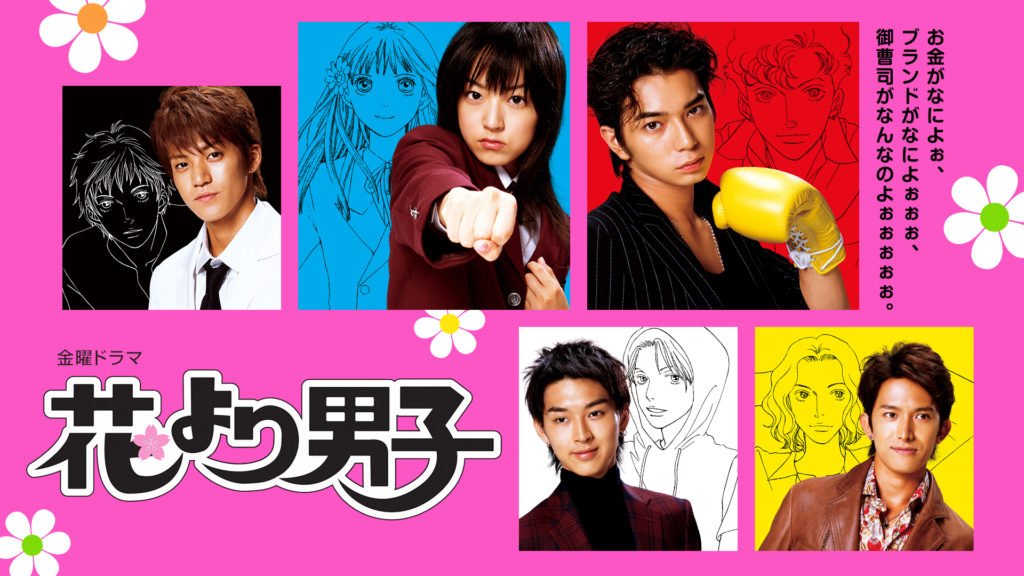
The music, meanwhile, is an extremely mixed bag that I can’t help but unironically adore. Its BGM tracks have moments of being over-the-top — so much so that they feel better-suited to an anime adaptation instead. The score is stupidly chaotic during the more tense or conflict heavy scenes, but it once again adds to the corniness of it all — and upon reflecting back on it, immediately feels nostalgic.
Best yet, though, are the vocal tracks littered across the series, with absolutely iconic tie-ins heard in the opening number, ending song and insert songs alike.
ARASHI, one of the most popular boy bands at the time, have their song “Wish” play as the opening tune — perhaps not surprising, since leading man Matsumoto is a member. Meanwhile, Ai Otsuka’s ground-breaking “Planetarium” closes the episodes out on a touching note. On top of that, the one and only Utada Hikaru’s famous songs “Flavour of Life” and “First Love” are also heard over the course of the show’s complete runtime. Talk about a solid OST!
A plotline that shows its age with tropes for days
Hana Yori Dango is a modern Cinderella kind of story, since Tsukushi, despite her phsyical strength and strength of character, is still the underappreciated and overlooked girl as school. She’s bullied, talked down to, oppressed, and ultimately behaves like any other everyday student, no matter how perfect she might seem in certain aspects.
She is the character who represents the general viewer of the show based almost entirely on her income status alone, and there will be no-one in the room who could possibly deny ever wanting to see her succeed. She’s a great character who deserves to be happy. I’d even say that she is almost too good to be true since she is as flawless as she is.
One issue some people found with the original manga was the depiction of Tsukasa, who originally held nothing back. In the source material, he threatens to punch a female student, makes cruel comments about a student’s attractiveness that have such a severe impact she goes under the knife — and even orders an attempted assault on Tsukushi herself. The TV adaptation, meanwhile, tones him down considerably — at least partly as a necessity given the shorter runtime.
He’s obviously still a detestable low-life, but his character takes a turn as soon as he encounters Tsukushi, someone who will not stand down when faced with overwhelming odds. She’s the first woman in Tsukasa’s life to simply tell him “no”, and that puts him in his place. And because of how she is true to herself, she teaches Tsukasa to become a better person — that in itself makes Hana Yori Dango such a satisfying watch.
He initially appears to be one of the most unlovable jerks to appear in such a setting, but he does not stay as such by the conclusion of the show, with a character that has developed almost entirely for the sake of deserving Tsukushi’s affection. And while I won’t spoil the many heartfelt gestures and actions that help to reveal his hidden heart of gold, the emotional finale of the show is sure to change even the most hardened hearts’ opinions of him.
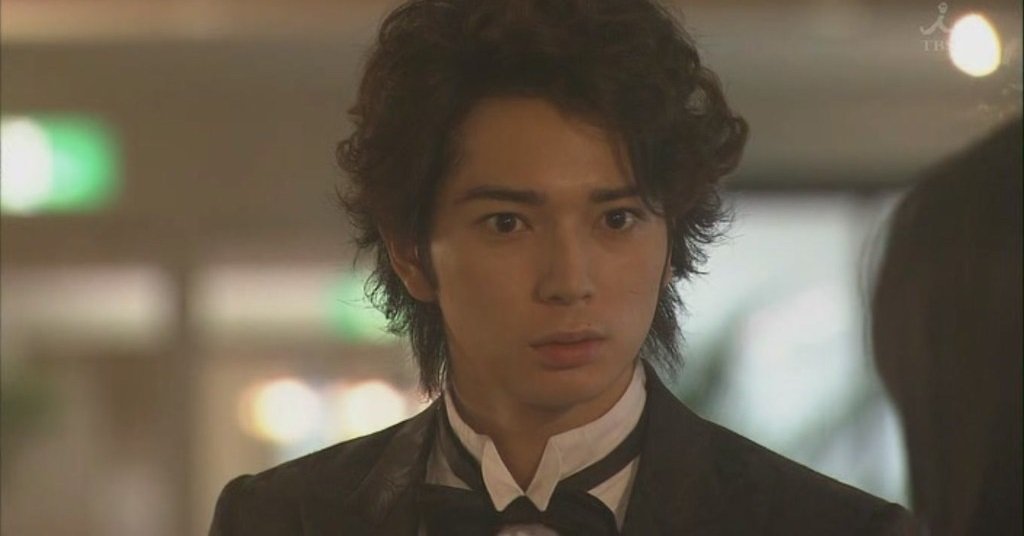
Sure, his sob story may not be good enough to make everyone completely understand him, nor sympathise with or forgive his behaviour completely — but it’s the journey that matters. And alongside all this satisfying character development from the one who needs it most are so many nostalgic feels that once set my teenage heart ablaze: head pats, the lending of a coat when the heroine gets too cold, lap pillows, kissing in the rain, angsty love confessions, a crapton of love triangles, opposites attract, and the pairing up of two tsunderes.
The show’s comedy may not translate brilliantly to western audiences, since it relies quite frequently on wordplay — although there are a few highlights of the script being “meta”, such as poking fun at the moment where Tsukushi trips over herself and lands on Tsukasa with their lips locking as a result.
If anything, the very best of its humour comes from its two leading stars bouncing off one another, since their chemistry as two awkward tsunderes makes their journey in love all the more charming and entertaining.
And where would we be without those ever-present tropes? As you might expect for a show from Hana Yori Dango’s era, there’s a frequent theme of “makeovers” serving as an indication that a character has changed, or simply for the sake of a beauty contest to progress the plotline.
And, of course, we have the bad boy trope through and through, where Tsukasa gets the girl despite being as much of an issue as he is. But that’s alright; he gets what he deserves in the end. He learns to improve himself when he realises the hurt he has caused to others — and the need to change his behaviour to ensure he gets the future he wants for himself.
A stupidly guilty pleasure of a romcom and teen drama
Hana Yori Dango hits all the right notes as a melodramatic, cheesy, heartfelt and downright cute teen drama. It manages to balance out heart and humour with its satisfying casting that delivers the best chemistry of all the Hana Yori Dango adaptations from over the years.
It a very faithful adaptation despite making a fair few cuts from the original story for the sake of condensing all the important bits into a considerably smaller and compact product. As a result, this specific adaptation has the best pacing and best feeling of closure by the end of its run.
So, do I recommend giving Hana Yori Dango a watch? Absolutely — especially if you fall into the younger age bracket, since anyone younger than 20 will likely be the ones to truly see its worth. Regrettably, streaming-wise, we’re at a loss on where to recommend you such a source right now, and the DVDs seem to be long out of print. But let’s just say there are English subbed videos of the episodes out there online if you look hard enough!
Join The Discussion
Rice Digital Discord
Rice Digital Twitter
Rice Digital Facebook
Or write us a letter for the Rice Digital Friday Letters Page by clicking here!
Disclosure: Some links in this article may be affiliate links, which means we may earn a small commission if you make a purchase after clicking on them. This is at no additional cost to you and helps support Rice Digital!
- Sigh of the Abyss: Shadow Bonds – Prologue Review - October 7, 2023
- Is She The Wolf? is wickedly addicting TV - October 6, 2023
- The steady consumption of Slow Damage - October 5, 2023




